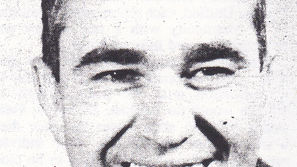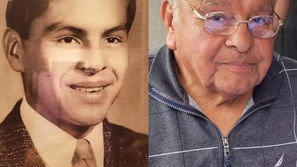1920 epidemic closed schools and businesses in Madera
- Bill Coate
- May 9, 2020
- 4 min read

Courtesy of the Ransom Family
Dr. Dow Ransom, shown here, returned to Madera from the Army just in time to take part in another fight in 1920 — the flu epidemic.
Only the family and a few friends were allowed into the church for the funeral. The monster that had taken the 2-year-old Hubbard twins was still on the prowl, seeking someone else to devour.
Lying in pretty, white caskets, the girls were taken to the cemetery and buried in the same grave, side by side. Then their parents went home to hide from the demon that had stolen their daughters.
In fact, the whole town was hiding. The Spanish flu had returned to Madera in 1920.
The warning had come in September, 1919. The epidemic that had killed millions in 1918/1919 had arisen again on America’s East Coast and was spreading west. Just as they had done a few months earlier, Maderans geared up for another life-and-death struggle with the flu.
On January 19, 1920, Public Health Officer, Dr. Charles A. Robinson, ordered the schools and some businesses closed and tried to convince the people to avoid public gatherings by postponing all social activities and staying home. He strongly advised parents to keep their children off the street and not permit them to congregate for the purpose of playing together. Neither did Robinson want people congregating or reading in the library. They would only be allowed to check out books.
Dr. Robinson’s strict mitigation efforts were clearly justified. By the time of the school closings, the flu appeared to be running rampant. Dr. Dow Ransom reported 40 cases the day before, and that very afternoon he had 30 new cases to report. The disease had hit the teaching staff of Lincoln with complete abandon. Four teachers had to go on leave because they had contracted the flu. Ironically, among the new cases reported that day was Superintendent of Schools, Craig Cunningham.
All of Madera recognized the menace, and as was the case in every threat, the community stepped up to the plate. F.W. Chambers, a local florist, decided that he could get along a whole lot easier with a shortage of help in his store, than could families, where all its members were down with the flu. He sent some of his hired help out to the aid of these stricken families. As a result, Mr. Chambers became the boss, clerk, cashier, errand boy, and general roust-about at his place of business until the flu situation had passed.
Meanwhile, the flu continued to take its toll, not only in Madera, but in the rest of the Valley as well. On January 27, Fresno reported 1,000 cases, and 200 of them had been contracted in the previous 24 hours. Rural Madera County continued to lead in the number of cases, and the schools remained closed.
The influenza epidemic wreaked havoc on the business community as well. The auto stage business was especially hard hit. Practically all traffic from one town to another ceased, so the stage business came to a standstill.
Anyone doing business in town wore a mask. Then a strange thing happened — well, perhaps not so strange to us living in Madera 100 years later.
Dr. Robinson began to feel some heat from the community, especially regarding the closing of the schools. Parents wanted their kids back in clas, and they let the Superintendent know how they felt.
However, there were many who held a different opinion. Even if it appeared that the flu was slowing down a little, as long as Fresno had as many cases as it did, Madera should take no chances by opening school a week or two weeks too soon. Robinson finally yielded to the parents, and on February 13, he gave the order for the schools to open. It was cause for celebration.
On Saturday, February 14, the Tribune headlines screamed “Town Opens Tonight.”
“The lid is off the city,” wrote the reporter. “The theater will be running as of old and will probably be crowded. The balls will rattle in the pool halls, and the dancers will make merry. The old town will seem like itself again, and after all is over and the Sabbath breaks and the church bells ring and the crowds flock to the various houses of worship, let it be hoped that there will be no recurrence of the flu, which has just about conquered this city.”
The paper went on to commend Robinson’s thinking. “He knows that the businessmen of the community should be shown some consideration. They have responded loyally to the orders of his office, and in view of the declining number of flu cases. He believes he is justified in taking the step he is taking.”
On March 20, 1920, Robinson sat down with the State’s health officer, who commended Madera County’s health officer. He said Robinson had made the correct call the month before. As of March 20, Madera County only had 15 cases of flu. “The situation was no longer serious here.”
So the crisis of 100 years ago passed. Businesses reopened; kids were in school, and nobody was wearing a mask to go shopping. Only the school board was left holding the bag. The school closings had thrown their instructional plan off schedule, and a new one would have to be constructed. So while the rest of the county celebrated, the trustees went to work.


























Comments